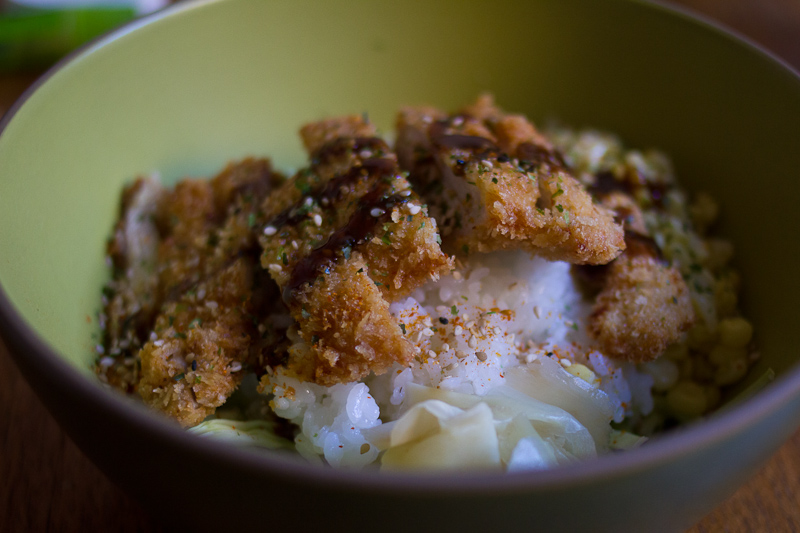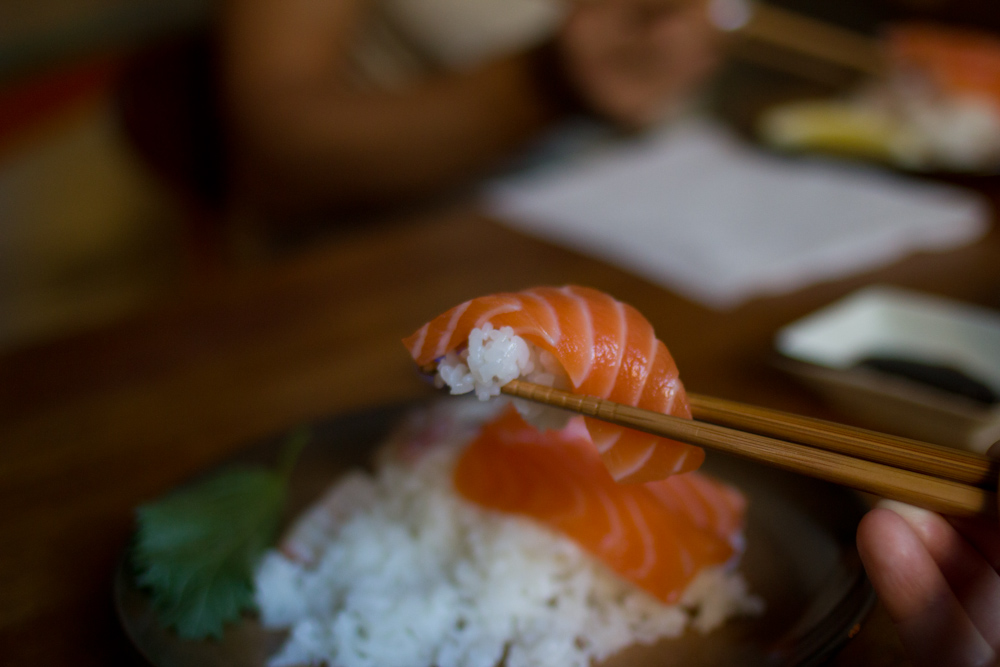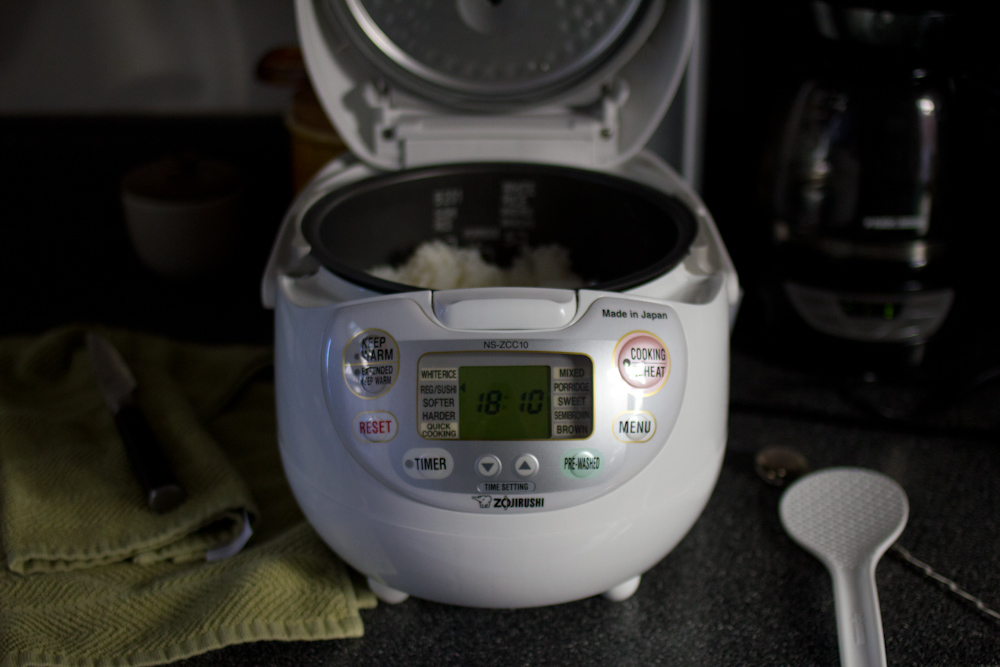Despite the name of this fine blog, many of the meals we eat are vegetarian. This recipe also happens to be vegan and gluten-free—do you even recognize us!? We are indeed pro-vegetable here at The Answer is Always Pork and this salad has become one of our weeknight favorites. You can throw it together in about 25 minutes, which is especially handy when you a) are trying to launch a new product at work, b) remember less than an hour before leaving for an event that it is a potluck, or c) that special combination of lazy and impatient that makes ordering take out impossible. It’s also really easy to scale this up for a group, just double or triple everything and it works out fine.
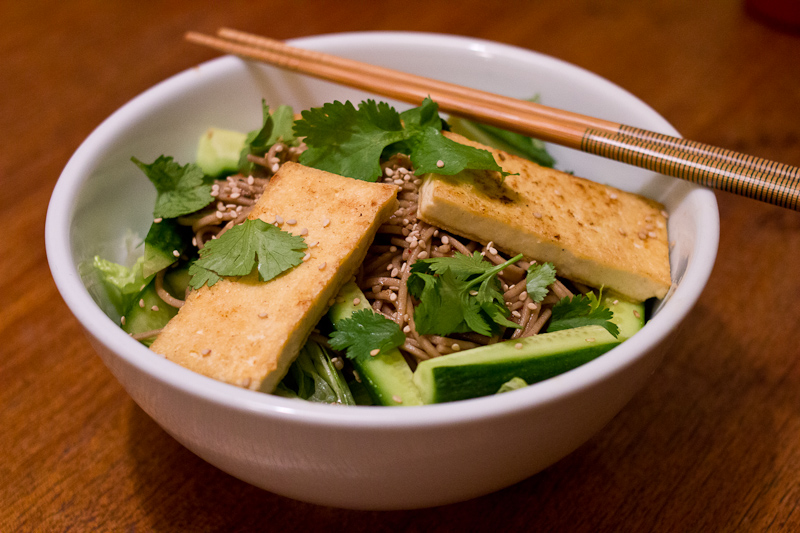
What else? We’re gradually making progress planning our wedding, which somehow still feels like the most obvious and the most surprising thing to happen to us. Jordan is back at school for the spring semester, though he is never really *off* anymore these days, masters-shmasters. I’m online shopping for obscure textile art and pottery books from the 70s, purchases include “Far Beyond the Fringe”, undeniably an amazing title for any book. Willow is decapitating toys shaped like Star Wars characters, no wookie left unscathed. There’s a new bakery in the neighborhood that’s pretty mind-blowing. Life is moving right along, and I like that just fine.
Spicy Soba Noodle Salad
For the dressing
1 lemon, zested and juiced
1-1″ piece of ginger, peeled and grated
2 cloves of garlic, grated
1/4 cup rice vinegar
1 tablespoon honey (or agave syrup for you super vegans)
2 tablespoons soy sauce
1 teaspoon sesame oil
2 – 3 tablespoons olive oil
a small pinch of cayenne pepper or a squirt of siracha chili sauce
salt and pepper to taste
For the salad
1 head of romaine lettuce, chopped
1 cucumber, sliced
cilantro, mint or green onion, sliced thinly
2 bunches of soba noodles (japanese buckwheat noodles, they come wrapped in single-serving bunches)
4 oz of extra firm tofu (I like the Trader Joe’s sprouted tofu that comes in two 4oz packages)
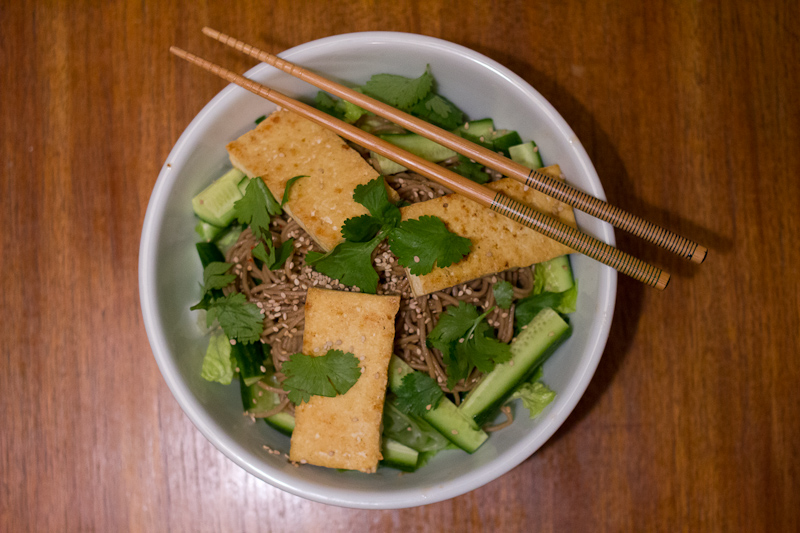
In a medium bowl, whisk together the dressing ingredients. Season with salt and pepper. Bring a medium pot of water to boil and season it with salt.
While you’re waiting for the water to boil, chop the lettuce, herbs and cucumber. Mix them together in two medium bowls. These will become your dinner bowls. Slice the tofu into 1.5″ x 0.5″ slices. Put a non-stick pan over medium heat. Pat the tofu dry with a paper towel and then brown the tofu, about 4 minutes per side. When your tofu is cooking on it’s last side, cook the soba. You can also serve the tofu raw, but I like
Cook the soba noodles according to the package directions, somewhere between 5 and 8 minutes. Drain the soba noodles and rinse with cold water. Put back into the pot and pour the dressing over the soba.
Top each salad bowl with soba and then sprinkle with tofu. Serve with siracha and sesame seeds.
-Emily

